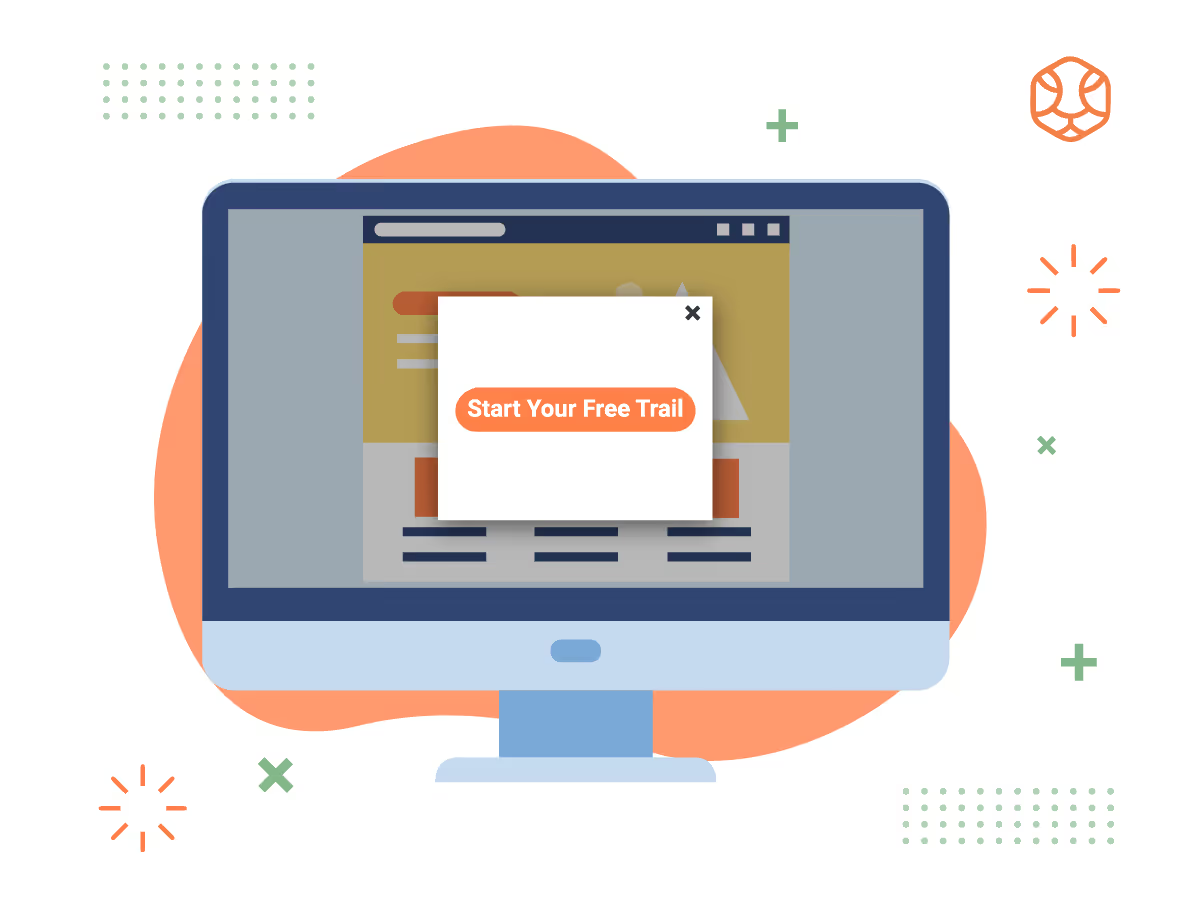Download the SaaS SEO Guide PDF
Over 60+ page SaaS SEO Guide in PDF format so you can read it whenever you want!



Over 60+ page SaaS SEO Guide in PDF format so you can read it whenever you want!







Your content team has been working hard to create blog content that drives traffic to your site and generates organic leads. Your sales team needs to convert those leads into lifelong customers and close the loop.
With organic leads, there's a good chance your lead found you by Googling their pain points, searching for solutions, or trying to find an alternative. You need to capitalize on that mindset: you're here to help your customers, but how can you start?
In this guide, we'll help you through the process of closing organic leads and boosting your conversion rate within your B2B SaaS sales team.
There are many strategies for converting website traffic to sales. This section will outline the six best ways to close organic leads for your B2B SaaS company. Many of these techniques are used by some of the top-selling SaaS companies worldwide.

With organic leads, you don't have much information about your customer right off the bat. It's tough to sell to a mysterious buyer. That's why the most crucial tip for any salesperson is to understand your customer inside and out.
It's the difference between selling to your best friend or a complete stranger: the more information you know about the buyer, the more personalized your approach can be.
At the end of the day, you are building a sales pitch. Understanding your customer's needs and where their pain points are is the backbone of your sales pitch. Who is the audience, why do they care, and how can they benefit from your software?
In other words, what's challenging about their current operation, and what do they wish was different?
Your software undoubtedly solves a problem, but what is that problem? How do you solve it? Think about this before even approaching the organic lead.
Thoroughly research your customer, their business, their industry, and their target market. When putting together your sales pitch, you'll want to include industry-specific pain points and issues that your audience is likely dealing with, along with how your software eliminates these issues.
If you can make the application in the sales pitch very specific to their needs, you'll improve your chances of closing the deal.

Once you understand your customers' needs and problems, you can build trust and credibility.
A quick way to build credibility is through case studies and testimonials. A testimonial is a positive review written by a recent customer. A case study is an in-depth look at a company before and after working with you.
In both cases, the goal is to show that you're a great company, people should do business with you, and they can trust you to deliver on your promises.
Testimonials should be quick and highlight some specific features of your business. You can't tell a customer what to write in their testimonial, but you can look for good examples once enough customers have submitted a testimonial. It should explain why the customer chose you, what set you apart from your competitors and how their business benefited from your software.
With case studies, you can go in a few different directions. A standard option in the industry is to put together an article that does a deep dive into a recent customer story. Look into the financial and operational issues they were experiencing before they introduced your software. Then, compare those figures to how the company is currently running after implementing your software.
Now is an excellent time to introduce figures and direct comparisons. Aim for values like, "this company's yield rate increased 30%, defect rate dropped 15%, and overall profits increased 20% thanks to our software".
If you present data and hard numbers, the reader will be more willing to trust you.
Another way to build trust is to highlight accolades, recognition, or awards that your company or software received. People will trust a company who has a proven track record and plenty of awards to its name.
Finally, make sure you're transparent about your shortcomings. That doesn't mean that you should highlight all the negatives associated with your product. Instead, point out that your software isn't perfect. By doing this, people will realize you're honest and believe what you say about the positive aspects of your company as well.
You can host this information on your site, share it in slides, and present it in pitches to customers before officially trying to close the deal.

We keep mentioning the sales pitch. In reality, a strong sales pitch is your secret weapon. All of your SaaS marketing efforts will be in vain if you can't close the deal, and the best way to do that is through a well-crafted sales pitch.
You need to focus on personalization and presenting compelling information in the pitch. You want an emotional reaction from the person receiving the pitch.
How can you do that? One way is to tap into the pain points you researched earlier.
Outline how devastating these pain points are and how your customers can avoid them with your software. Give specific examples of how it's possible and connect the dots for the customer — in other words, draw a direct line from their pain point, through your software, to the result of higher sales or fewer headaches.
With any sales pitch, it's best to avoid general examples. The more specific you can be, the better the results will be. At the same time, you don't want to use a ton of "salesy language." It shouldn't feel like they're being pitched on a product.
Some people say that a B2B SaaS sales pitch should follow the same format as a doctor's visit:
Of course, you want to do this with plenty of emotion and captivating messages through your pitch.

The sales pitch isn't the end of your journey with this customer. Even if they say no, it's not over. We're not suggesting that you keep pitching and pleading with them — instead, take a more subtle route.
You want to keep in touch with the customer and answer any questions they have. Reach out to them a few times and see if they need to learn more or have any concerns with your software.
In many cases, the customer simply needs to think about your pitch, bring it to different decision-makers at their company, see if they have the budget for your software, and then get back to you. Taking a step back after your pitch will give the customer the time and space they need to do all these things.
What can you do in the meantime? Be an ally to them and guide them. This period is part of nurturing the lead before converting them into lifelong customers.
If they have a specific issue with your pitch, try to address it. You could shift the pitch and focus on something else. In some cases, there was a misunderstanding during your pitch, and you can clarify it and then convert them.
Even if they have a fundamental problem with your software and need help understanding how it fits in their process, you can come back with a more refined pitch and explain that.
This organic lead didn't find you by accident; after all, they intentionally searched for something that brought them to you. That means that there's something in your software that they value. You just need to remind them of that, and further show how helpful your software could be.
Things might look bleak after the pitch, and they seem profoundly uninterested. It may be time to look into their company's values, learn more about their industry, and re-pitch your product with these new learnings. Alternatively, you may need to pitch to someone in their organization who is higher up the chain.

The bottom line is that the organic lead is likely not familiar with you or your company. It's easier to convert them if they can try your product for free. For example, you could offer a 7-day free trial or a limited version of your software for them to try out.
In either case, it helps reduce a lot of the anxiety around buying a new product. It's easier to sell a license to your software when the customer has already tried it and found out how great it is.
It's also easier to sell a product when the customer can see how well it can help their business. With a free trial, they get a personalized and specific experience, plus plenty of examples of how great the software is for their application.
On your end, it shouldn't hurt your bottom line. Giving a quick free trial of your product won't cost you any extra in development.
Of course, this model doesn't work for every B2B SaaS company. You should spend time with managers, the finance team, and executives to decide if this is the right option for your business. If it hurts your profits with no foreseeable upside, you can skip the free trial (but we doubt this will be the case for most companies).

The more you pitch, the more success you'll have. If you follow the steps we've outlined in this article, there's a good chance you'll start experiencing success with your organic search efforts. It's essential that you start tracking your results and figuring out what works for you and what needs to be improved. You can start by tracking how many leads come to you organically and their source. Your website admin can look into these figures, or you can send out surveys to customers after they first reach out to you.
Understanding where your organic leads come from will give you a better picture of where to focus your efforts. Did all your organic leads come from a single keyword search on Google? You can create content around this keyword to further boost your search results. Strong content performers can help reduce your Google ad spend if people find your site naturally.
Getting back to closing sales, you should have clear goals. These goals could be how many leads you want to generate, your target conversion rate, or your campaign's total Return On Investment (ROI).
Always check in with the data and use it to your advantage. It's a great way to maximize your campaigns and develop the best sales strategy.
Try to set a recurring meeting to compile and review this data with the right team. Many companies will do quarterly check-ins to see how their marketing campaign is doing, what's working, and what needs to be rethought.
You can also include data from your pitches in these meetings. Data is a potent tool; you should use it to help boost your sales. After all, running a marketing campaign with a blindfold can lead to wasted time and money.
Make sure you keep checking your progress and compare it against your goals. If you want a conversion rate of 5% and you're only at 1%, you need to take a hard look at your model. Either your conversion rate was too optimistic, or there's a gap in your conversion process.
As you just learned, there are a few great ways to close on an organic lead. Now it's your turn to close the deal using our six tips — remember to be specific with your pitch, maximize your credibility, be personal, follow up after the pitch, add a free trial and track your success. To learn more, schedule a quick discovery call with SimpleTiger today.

Sean is Chief Operating Officer at SimpleTiger, responsible for operations, process creation, team utilization and growth, as well as sometimes direct client consultation.
Over 60+ pages detailing how to grow your SaaS company using a proven SEO process.


Schedule a Discovery Call and see how we've helped hundreds of SaaS companies grow!




Actionable insights to help you grow your SaaS and dominate your search market!